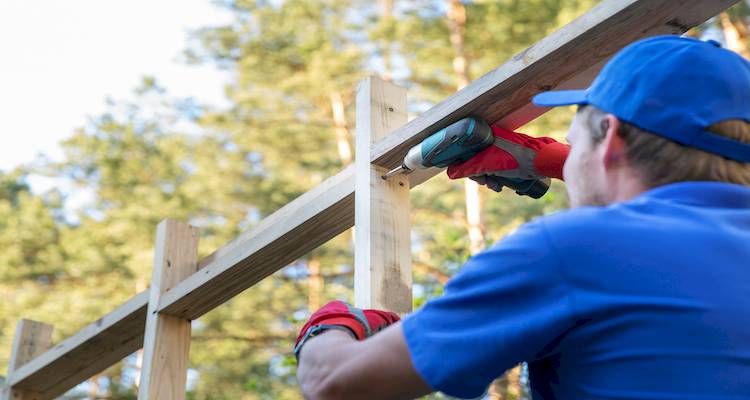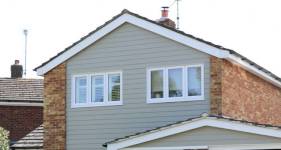How to Fit a Cat Flap
If you'd like to learn how to fit a cat flap, read our easy-to-follow guide below. It includes step-by-step instructions and images, as well as a tool list of everything you'll need.
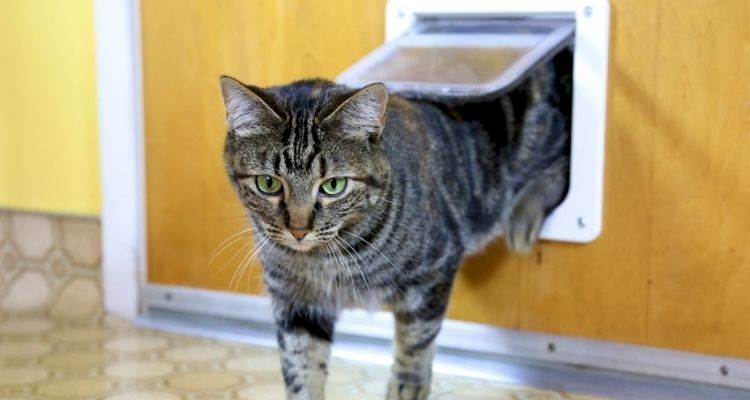
Table of Contents
What is a Cat Flap?
A cat flap is a small hinged flat that is fitted into the lower part of an external door. It provides a small opening where a cat can stroll freely in and out of the home as it pleases.
Cat flaps are great because they eliminate the need to have to let your cat in and out and provide them with the freedom to come and go as they please.
What Tools Do I Need to Fit a Cat Flap?
Below is a list of the tools you’ll need for a cat flap installation:
- Drill
- Drill bits
- Screwdriver
- Tape measure
- Spirit level
- Jigsaw
- Pencil
What Safety Equipment Do I Need to Install a Cat Flap?
You won’t need any particular safety equipment when installing a cat flap. However, you may want to wear protective goggles when drilling and cutting through the door to avoid allowing any dust or debris to enter your eyes.
What Materials Do I Need to Fit a Cat Flap?
Below is a list of materials you’ll need for a cat flap installation:
- Cat flap
- External door
- Screws
- Cat
- Screw caps
Preparing to Install a Cat Flap
When preparing to install a cat flap, you will need to start by measuring your cat so that you can buy a cat flap that is suitable for your particular cat.
You will also need to measure your cat’s belly height to determine the height at which the cat flap needs to be installed on your door.
How to Fit a Cat Flap Yourself
Follow our step-by-step guide below on how to install a cat flap. Be sure to refer back to your manufacturer’s instructions as some installations may differ:
Step 1
Firstly, determine the height that the cat flat needs to be placed based on your cat’s belly measurement. Use this as a guide for the next step.
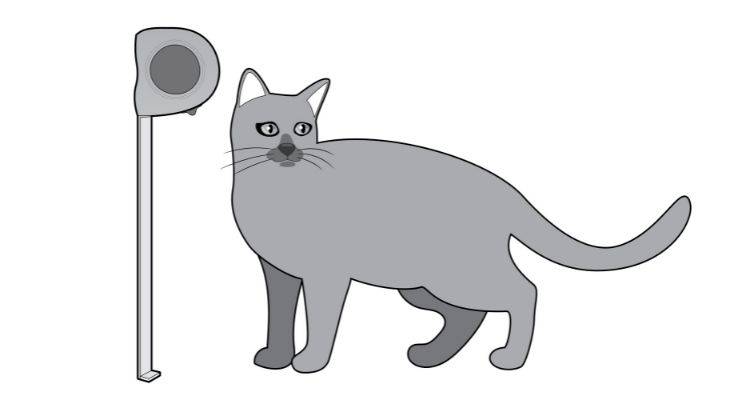
Step 2
Measure the distance across the length of the door and put a marking in the centre of the door. Use this marking as a guide and mark out an outline of the shape of the cat flap so that you know exactly where you need to cut.
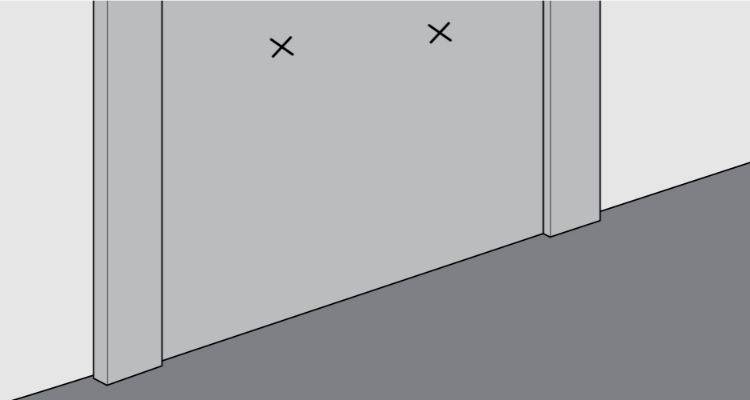
Step 3
Use your jigsaw to cut out the shape of the cat flap into the door in the correct position.
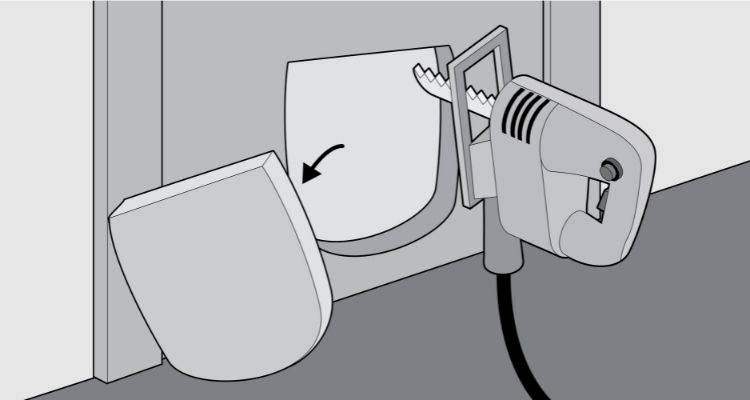
Step 4
Put the cat flap in situ to ensure it’s a perfect fit. Place pencil markings through each of the holes in the pet flap so that you know where you need to drill.
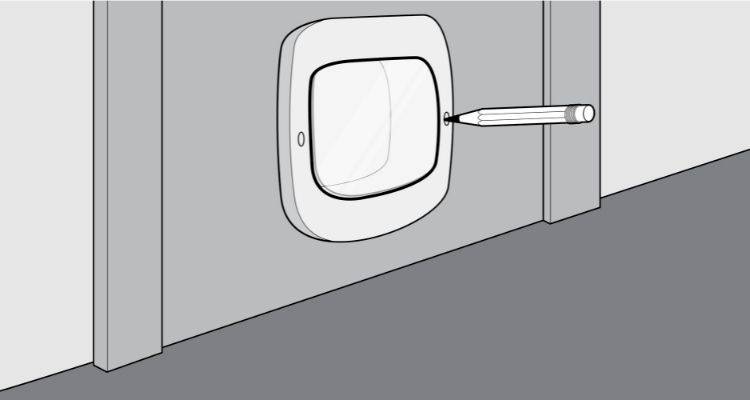
Step 5
Once you’re happy with the fit and the pencil marks are complete, remove the pet flap and sand around the cuts in the door to create smooth edges.
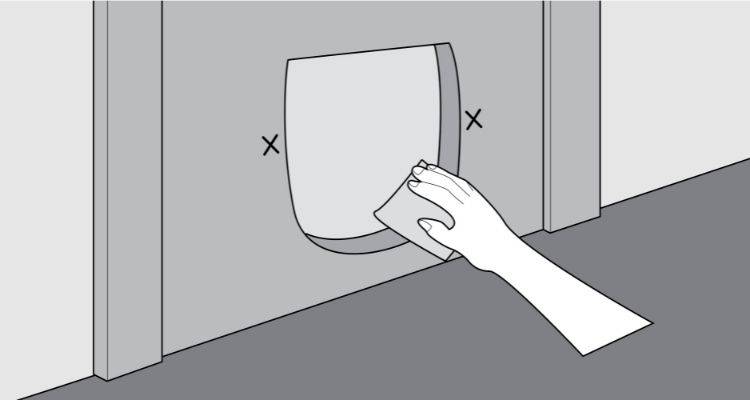
Step 6
Drill through the pencil marks to create holes ready for screwing the cat flap into place.
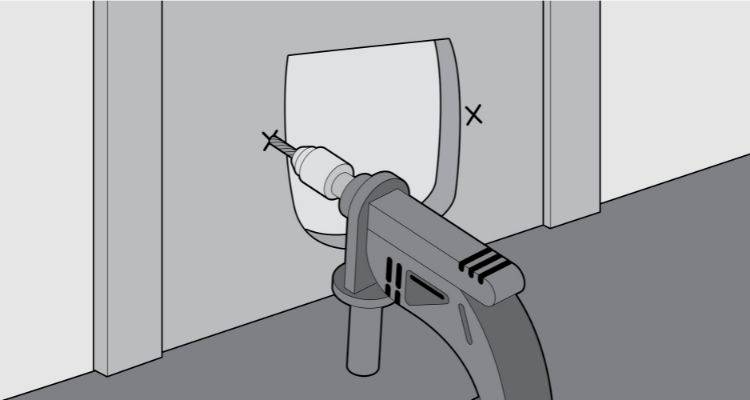
Step 7
Replace the cat flap and install screws as needed into the holes that you’ve created. Be sure to follow the manufacturer’s instructions as you do this to ensure you screw it in correctly.
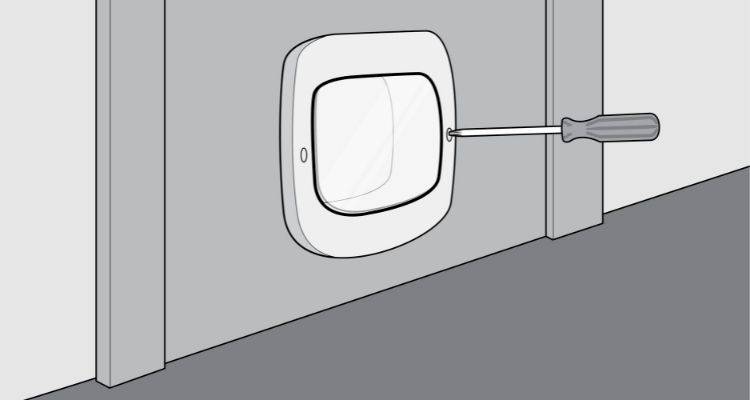
Step 8
If your cat flap features screw caps, install them now.
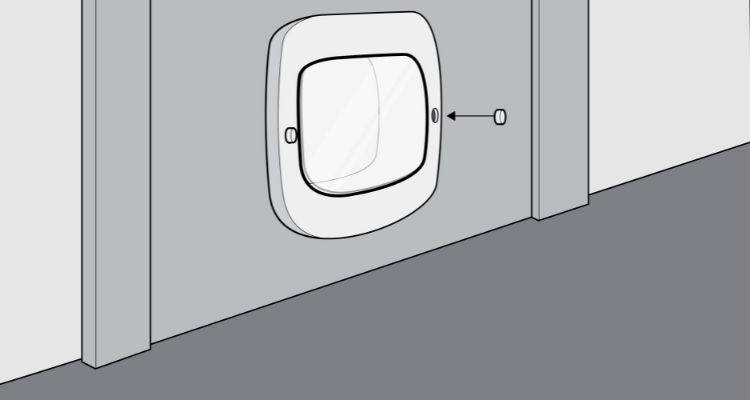
Step 9
Check that the cat flap door opens and closes correctly.
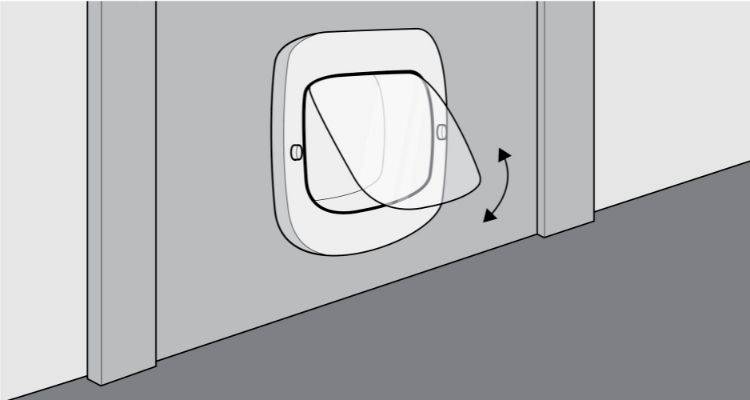
Step 10
Your door with a cat flap is now complete and ready for use.
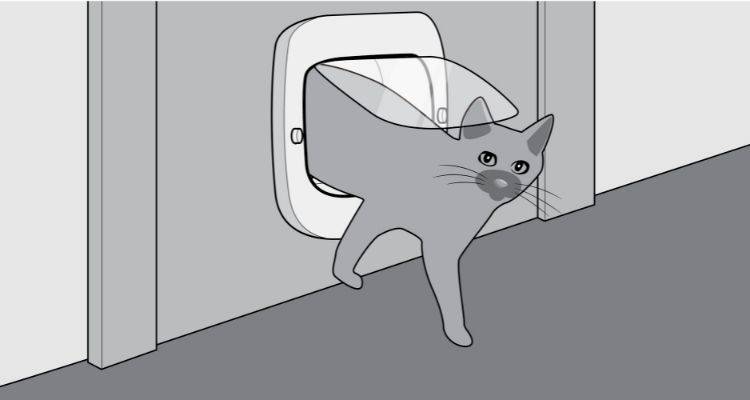
Types of Cat Flap
There are several different types of cat flap, each with different locking mechanisms. Below is a list of the different types and the pros and cons of each:
Classic Pet Flap
A classic pet flap is a two-way flap that allows your cat to come and go as they please. This is the most basic type of cat flap and is usually very cheap and budget-friendly.
The only problem with these cat flaps is that they don’t lock, so other pets or animals from around the street could stroll into your home at any time. You also have no control over when you can go in and out of the home.
PROS
✔ Low cost
✔ Budget-friendly
✔ Simple option
CONS
✖ Provides no security
Lockable Pet Flap
A lockable pet flap allows you to lock the door on the flap, effectively keeping your pet inside or outside. This ensures that your pet is always where you want them to be, and you know where they are at all times as they can’t just wander in and out.
You can also lock the flap at night to prevent other animals from entering your home. This lock also protects the home from bad weather. These cat flaps usually come at a low cost and are relatively easy to install.
PROS
✔ Low cost
✔ Budget-friendly
✔ Lockable
CONS
✖ Offers no security when unlocked
Infrared Pet Flap
An infrared pet flap is usually quite a bit more expensive than the previous options but offers a lot more control. This flap features an infrared key that matches up to one on your pet’s collar and unlocks the door when your pet approaches.
If you want to control which animals can and can’t enter your home, then an infrared pet flap is a good option. The only issue with this type is that if your neighbours have their pet flap set to the same frequency, their pets could also enter your home.
PROS
✔ Good security
✔ Option to buy multiple keys for multiple pets
CONS
✖ Infrared frequency may be the same as a neighbour
Magnetic Pet Flap
A magnetic pet flap allows your pet to enter with a special tag or collar. The only problem with this type of pet flap is that it may take a moment or two to recognise your pet.
This means that your pet may not be able to enter your home instantly. These pet flaps tend to be a little cheaper than infrared cat flaps but offer more security than a basic flap.
PROS
✔ Good security
✔ Cheaper than an infrared or microchip model
CONS
✖ Can take a moment to recognise your pet
✖ Magnetic device may be the same as a neighbour
Microchip Pet Flap
A microchip pet flap is the most expensive option, however, it is also the most secure option. This type of cat flap works by reading the microchip on your pet.
It is specifically coded to only read the microchip that is embedded in your pet, so this prevents any other animals from being able to walk into your home. You can also program this type of pet flap to work with multiple pets in your home.
PROS
✔ Very secure
CONS
✖ High cost
Cat Flap Training
Training your cat to use their cat flap can be done using the two steps below:
Teach them to get in and out
You should hold the door open in front of your cat and use treats to entice them to go from one side of the door to the other. Keep moving the treats closer and closer to the opening until you can pass them completely through.
Reward your cat whenever it does start to pass completely through the cat flap. Remember to show them that the flap goes both ways.
Teach them to push
Once your cat is a master of going in and out of the flap with your help, you then need to teach them that they can get in and out by themselves.
Prop the flap open a little bit so that your cat can see the other side but has to push to get through. This will teach them how the door works.
How to Clean a Cat Flap
Avoid using glass cleaner on your cat flap window, as this can make it look cloudy and streaky. Instead, you should opt for a non-ammonia-based household cleaner to clean your cat flap, such as washing up liquid and warm water. Simply wash away the dirt and grime with this mixture, and then dry the cat flap off using a dry cloth or paper towel.
If your cat flap features electrical components, you should avoid going anywhere near the electrical components with water. Instead, wipe these areas clean with a dry cloth.
It is recommended that you clean your cat flap at least once each month to keep it dirt-free and to keep the opening looking clear. If your cat uses your flap often, or if you have numerous cats using your cat flap, then you may need to increase this to once a fortnight or once a week, depending on how quickly dirt and grime accumulate.
FAQs
Who invented the cat flap?
He cut a hole in the door and hung some black cloth over it, thus inventing the cat flap.
How does an electronic cat flap work?
The cat flap reads this whenever your pet approaches, and if it matches up, then the door will unlock, allowing your pet to pass through.
What size cat flap do I need?
It’s important that you measure your cat before buying the flap to ensure you get the right size. Allow a couple of inches on either side of your pet’s measurements so that they don’t have to squeeze into the cat flap.
Can I lock my cat flap?
Can I install a cat flap to a uPVC door?
Can I install a cat flap to a window?
Most people choose to hire a professional to fit a window cat flap as it can be quite a difficult job.
Sources
https://www.whiskas.co.uk/kitten/play/using-the-cat-flap
https://www.youtube.com/watch?v=gAxkQpv8QOU
https://www.vets4pets.com/pet-health-advice/cat-advice/cat-flap-training
https://halepetdoorpettips.com/2011/08/24/make-your-pet-door-like-new-again-clean-your-flaps
https://www.tuxedo-cat.co.uk/who-invented-the-cat-flap





